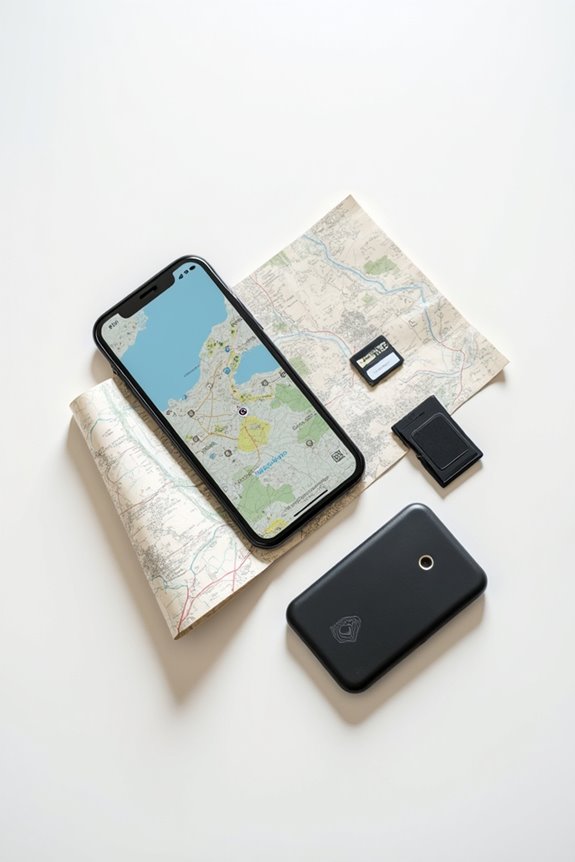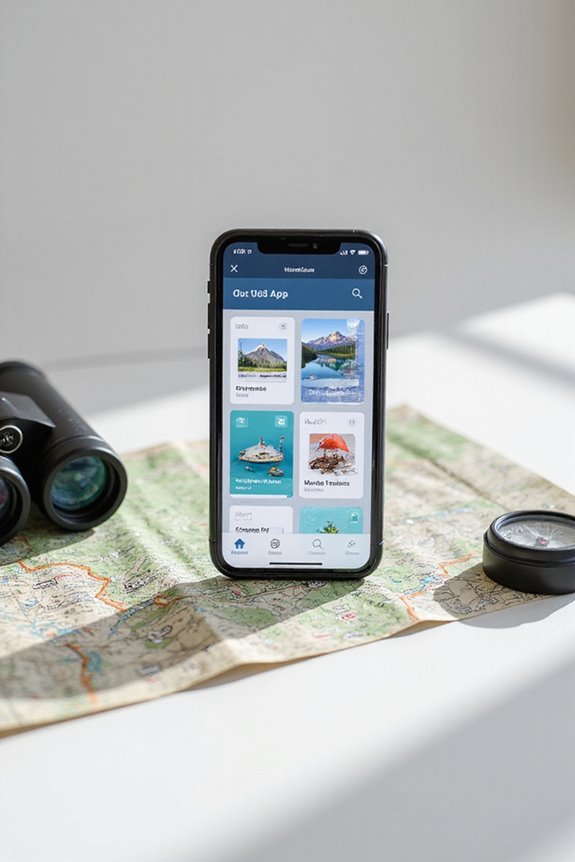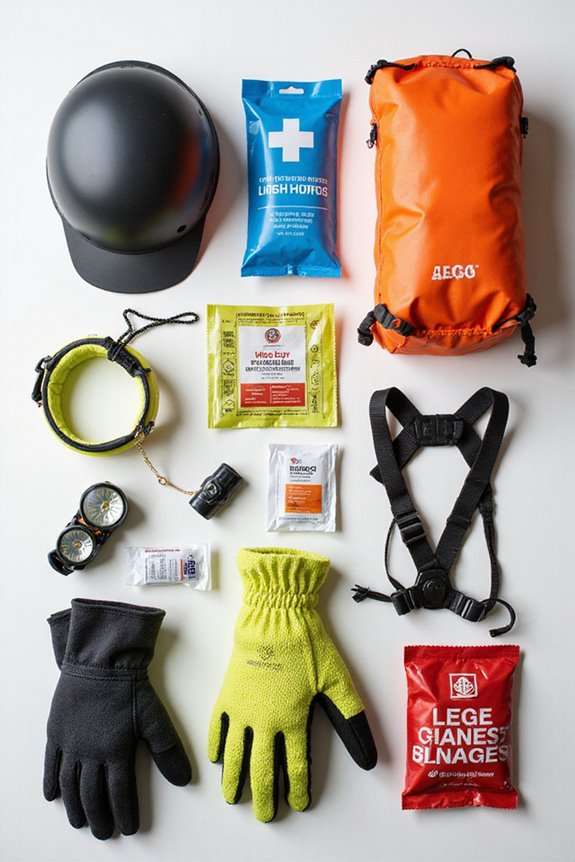To store digital maps for offline use, start by selecting a format like vector maps, which save space while delivering high-quality zooms. Use apps like Maps.me for complete offline maps or Google Maps for basic navigation. You’ll want to define areas in tools like ArcGIS, ensuring all the necessary assets are included. Don’t forget to customize layer management, too! By efficiently handling data storage and syncing, adventurers can explore freely, and there’s more to discover about managing these maps effectively.
Key Takeaways
- Choose vector maps for efficient storage, as they take up less space and provide quality zoom levels compared to raster images.
- Use applications like ArcGIS Field Maps or ArcGIS Pro to define specific map areas for offline preparation.
- Download necessary map areas while considering storage limitations to avoid excessive data use.
- Ensure synchronization of offline edits once connectivity is restored to keep data updated.
- Explore popular apps like Maps.me or Here WeGo that offer comprehensive offline mapping solutions.
Understanding Offline Map Storage Methods
When it comes to storing digital maps for offline use, a bit of understanding can go a long way, especially if one wants to avoid the dreaded “storage full” notification. Offline maps are primarily stored as tile storage, which can be made up of raster images or, better yet, vector maps. Vector maps are the heroes here; they take up less space while still delivering quality zoom levels and detail. Imagine trying to download an entire region, like a quarter of California—yikes! That could eat up around 1.5GB of your precious storage. So, choosing vector maps over raster can save space and keep your device running smoothly. Balancing your offline map collection with other data, like photos, is key to a stress-free experience.
Preparing Maps for Offline Use

Storing digital maps for offline use isn’t just about having the right tools; it’s about preparing those maps so they work seamlessly when the internet isn’t around. Offline map preparation involves defining specific map areas in applications like ArcGIS Field Maps or ArcGIS Pro, guaranteeing they’re customized to include all necessary assets. It’s like packing a bag for a trip—only take what you truly need! Data accessibility is vital; mobile workers can capture and edit data on-the-go, syncing it later when they’re back online. Plus, managing layers, whether vector or raster tiles, guarantees that everything is ready for any adventure. So, gear up, prepare those maps, and enjoy exploring without a data signal!
Popular Applications & Platforms Supporting Offline Maps
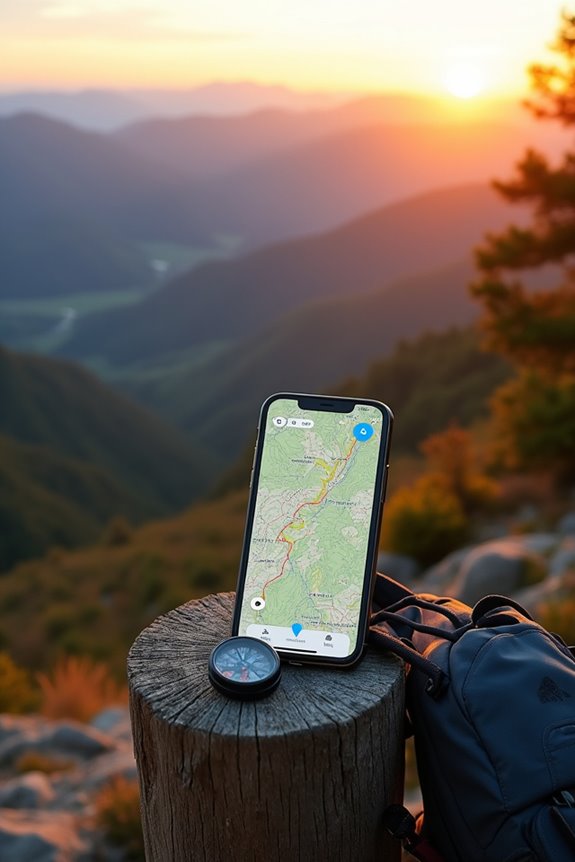
Finding the right application for offline maps can feel like searching for a needle in a haystack, especially when so many options are out there. Among the favorites is MapFactor Navigator, which offers offline maps using OpenStreetMaps and even TomTom for those who crave accuracy. Then there’s Maps.me, a gem that boasts entirely offline maps and turn-by-turn direction, all updated by dedicated OpenStreetMap contributors. CoPilot GPS keeps things simple with easy-to-read instructions, while Here WeGo shines for city explorers, offering maps for over 100 countries. Even Google Maps has some offline tricks up its sleeve, although it may not be as thorough. With these choices, traversing offline becomes a breeze, no matter where your adventures take you!
Technical Considerations for Offline Maps

Charting the world of offline maps can feel like commencing a treasure hunt, where each technical consideration is a clue leading to a successful adventure. To embark on this journey, one must consider offline map synchronization, which guarantees that any edits made offline are smoothly synced back once connectivity is restored. When it comes to feature layer considerations, not all layers play nicely offline; some, like map notes, can be left behind due to their structure. Additionally, downloading the right map areas means packaging data smartly, which can save precious storage space on devices. Balancing resolution and size is key, as larger areas can gobble up space faster than a hungry treasure hunter.
Benefits of Offline Maps
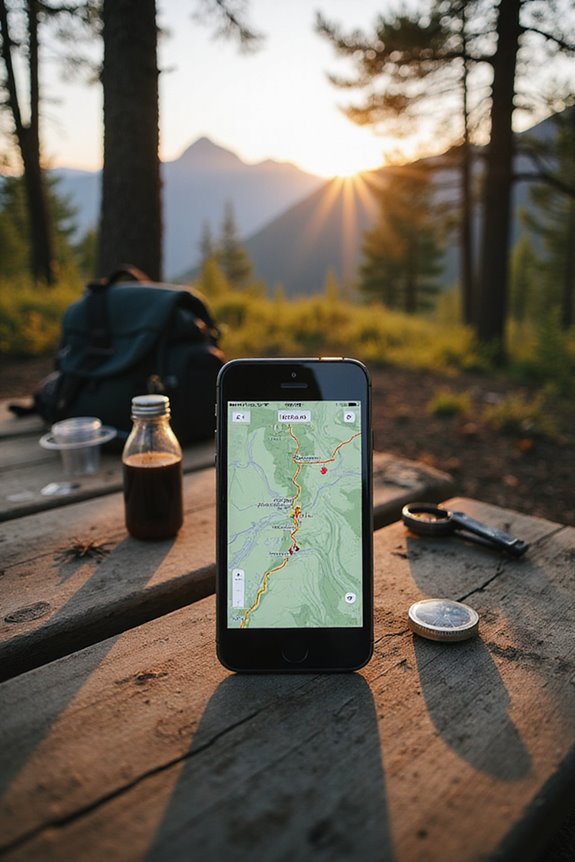
While many may take for granted the convenience of online maps, the benefits of offline maps can truly transform the way one navigates the world. Imagine being out hiking, surrounded by nature, with no cell signal in sight. Offline maps guarantee uninterrupted navigation, enhancing user experience in remote areas. They save on data, keeping costs low, especially when roaming internationally—no more surprise bills! Plus, they help devices run longer by conserving battery life, making them perfect for extended outdoor adventures. With offline maps, safety increases; travelers can confidently explore without worrying about losing connectivity. Ultimately, these practical applications not only enhance navigation but also empower users to roam freely, embracing the journey with peace of mind.
Best Practices for Managing Offline Maps
Managing offline maps effectively can feel like opening a treasure chest of navigational possibilities. To guarantee a smooth experience, it’s essential to optimize map data—think smaller files and simplified layers to save space and speed up downloads. Implement user authentication to keep track of who’s accessing what, avoiding messy overlaps and guaranteeing accountability. Data synchronization becomes your best friend; regular updates help keep information fresh, especially when users sync their edits after a trip. Also, consider segmenting areas among team members—this prevents chaotic edits and protects data integrity. With these best practices, offline maps transform from mere tools to essential companions, making every adventure not just possible, but enjoyable!
Local Data Storage Formats for Offline Maps
When it comes to storing digital maps for offline use, choosing the right local data storage format can feel like picking the perfect pair of shoes for a long hike. Among the popular options, the PBF format stands out for its advantages, like being highly compressed and optimized, perfect for OpenStreetMap data. On the flip side, the OGC GeoPackage shines with its ability to handle multiple layers and projections, making it a versatile choice. Other formats, like OSM XML and MBTiles, have their uses too, but they may not be as efficient. Ultimately, selecting the right format depends on specific needs—whether it’s the speed of PBF or the flexibility of GeoPackage, each has something unique to offer.
Downloading and Caching Offline Basemaps
After selecting the right format for storing digital maps, the next step is all about getting those basemaps onto devices for offline adventures. Users can harness built-in app functions like “Generate Cache” to select regions interactively. Imagine zooming in on that perfect hiking trail or drawing a bounding box around a city you want to explore—all while ensuring efficient tile caching. It’s essential to monitor progress with notifications, ensuring those tiles are saved correctly for quick access. Plus, organizing cached maps into dedicated folders makes life easier. And let’s not forget: when the maps are rendered beautifully, users can truly enjoy the offline experience, all while keeping their storage needs in check. Happy caching!
Optimizing Offline Data for Mobile Devices
Optimizing offline data for mobile devices can feel like a game of Tetris, where every piece must fit perfectly to create a seamless experience. Utilizing offline map compression techniques is essential; it minimizes storage needs without sacrificing quality. Imagine a traveler, uncovering hidden gems in a remote area, all while saving mobile data—now that’s efficient! Mobile data management goes hand in hand with this process, ensuring that outdated maps don’t clutter devices. Regular updates can keep offline maps relevant and accurate, like a trusty sidekick on an adventure. Efficient cache management lets users store and access maps effortlessly, ensuring that the only thing they need to worry about is where to explore next, not if they have data.
Frequently Asked Questions
Can I Use Offline Maps Without a GPS Signal?
Offline maps can be used without a GPS signal, but users lose real-time navigation features. They must rely on static references and manual navigation unless utilizing GPS alternatives for basic positioning in offline navigation scenarios.
How Do I Delete Old Offline Maps From My Device?
Like pruning a garden, deleting maps nurtures the device’s storage. By managing storage effectively, users can remove old offline maps, ensuring their digital landscape remains clear and efficient for future navigation adventures.
What Happens if My Device Runs Out of Storage?
When a device runs out of storage, map downloads fail, leading to errors. Storage optimization techniques, including map compression, can alleviate space issues, enabling users to maintain necessary offline maps without performance degradation.
Are Offline Maps Updated Automatically When Online?
Offline maps do not receive automatic updates unless connected online for syncing. Users typically must manually initiate updates or adjust settings for automatic updates, depending on the app’s capabilities and user preferences.
Can I Share Offline Maps With Other Users?
Like a treasure chest locked away, offline maps present limited sharing options. User permissions often hinder access, complicating distribution. Therefore, sharing these digital gems necessitates careful navigation through technical landscapes and potential restrictions.

